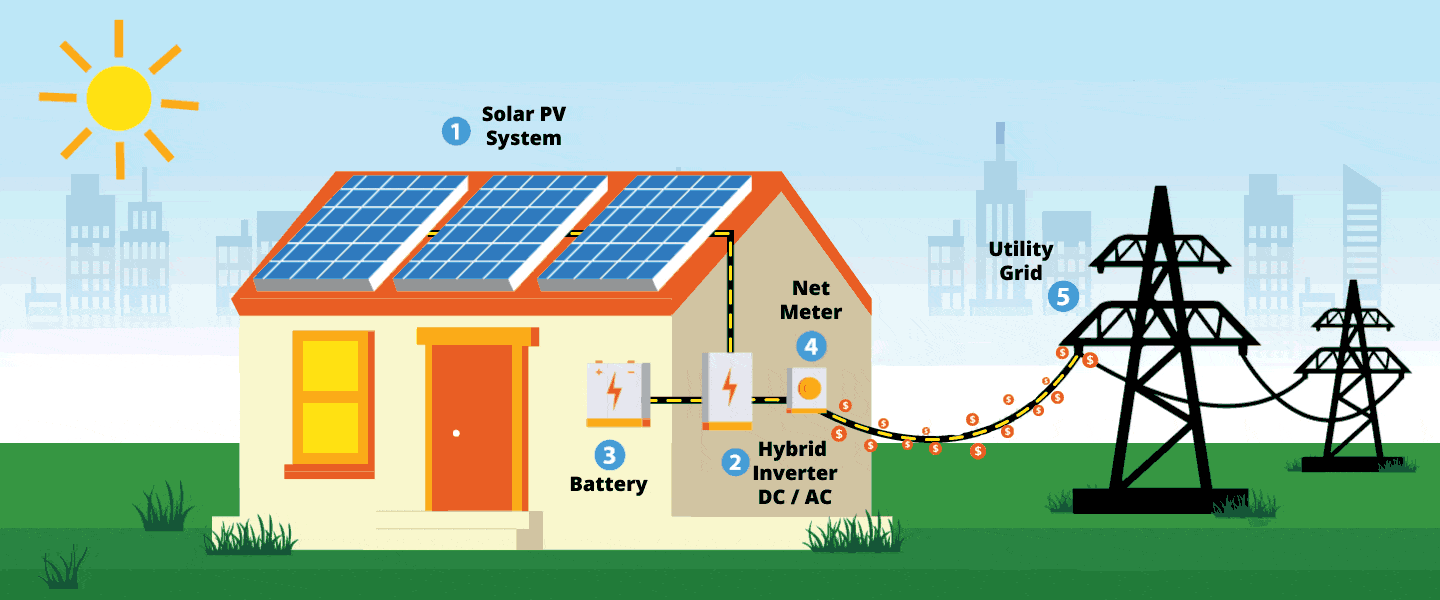1. Solar Radiation Level
The intensity of local sunlight has a great influence on the choice of PV system. And from the perspective of power consumption, the power generation capacity of PV system should ideally be sufficient to cover the daily household energy consumption. The data related to the intensity of sunlight in the area can be obtained through the internet.
2. System Efficiency
Generally speaking, a complete PV energy storage system has a power loss of about 12%, which consists mainly of
● DC/DC conversion efficiency loss
● Battery charge/discharge cycle efficiency loss
● DC/AC conversion efficiency loss
● AC charging efficiency loss
There are also various unavoidable losses during the operation of the system, such as transmission losses, line losses, control losses, etc. Therefore, when designing the PV energy storage system, we should ensure that the designed battery capacity can meet the actual demand as much as possible. Considering the power loss of the overall system, the actual required battery capacity should be
Actual required battery capacity = designed battery capacity / system efficiency
3. Home Battery Backup System Available Capacity
The “battery capacity” and “available capacity” in the battery parameter table are important references for designing a home energy storage system. If the available capacity is not indicated in the battery parameters, it can be calculated by the product of the battery depth of discharge (DOD) and the battery capacity.
When using a lithium battery bank with an energy storage inverter, it is important to pay attention to the depth of discharge in addition to the available capacity, because the preset depth of discharge may not be the same as the depth of discharge of the battery itself when used with a specific energy storage inverter.
4. Parameter Matching
When designing a home energy storage system, it is very important that the same parameters of the inverter and lithium battery bank are matched. If the parameters do not match, the system will follow a smaller value to operate. Especially in the standby power mode, the designer should calculate the battery charge and discharge rate and power supply capacity based on the lower value.
5. Application Scenarios
Application scenarios are also an important consideration when designing a home energy storage system. In most cases, residential energy storage can be used to increase the self-consumption rate of new energy and reduce the amount of electricity bought by the grid, or to store the electricity produced by PV as a home battery backup system.
Time-of-Use
Battery backup power for home
Self-generation and self-consumption
Post time: Jul-25-2022


